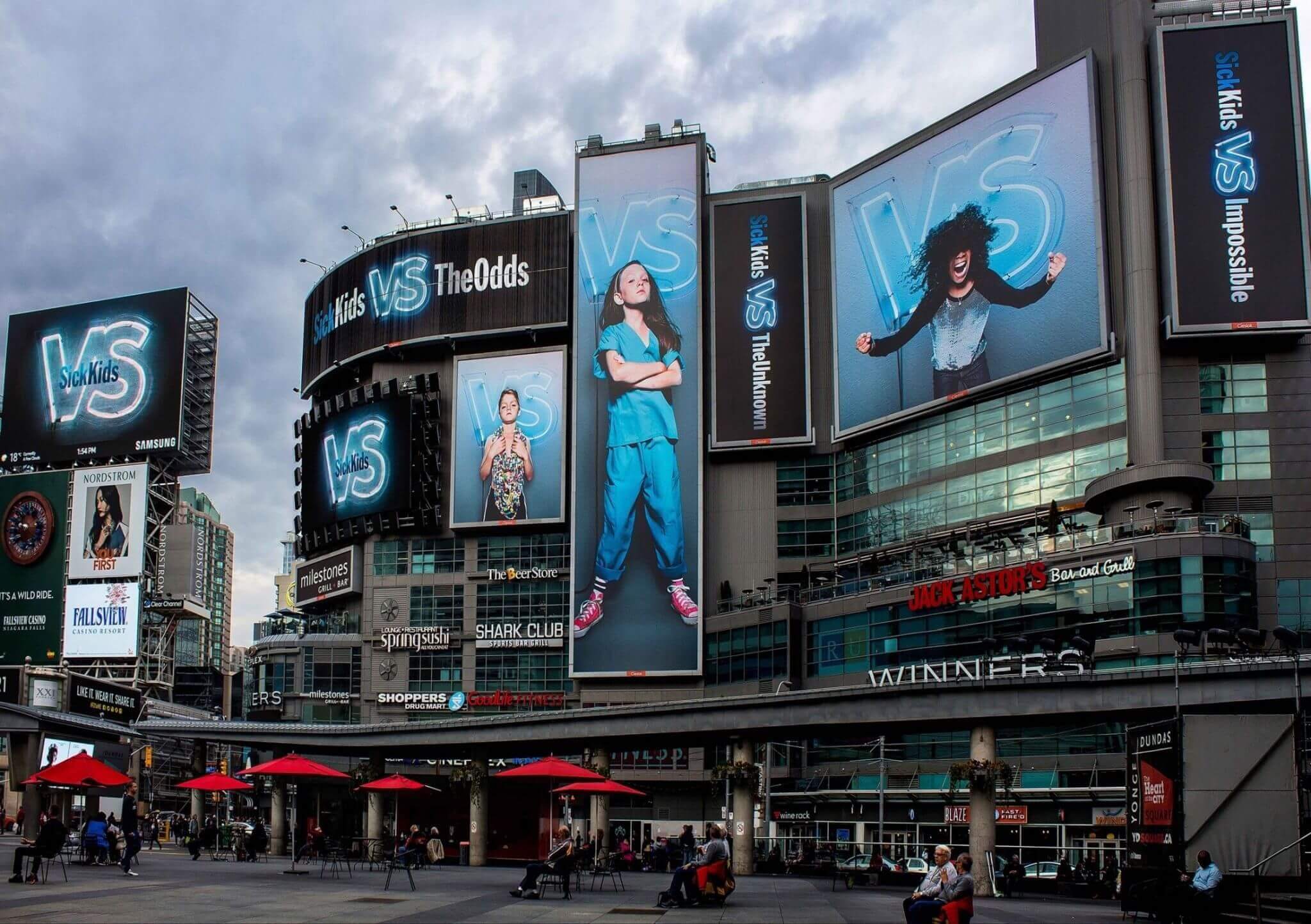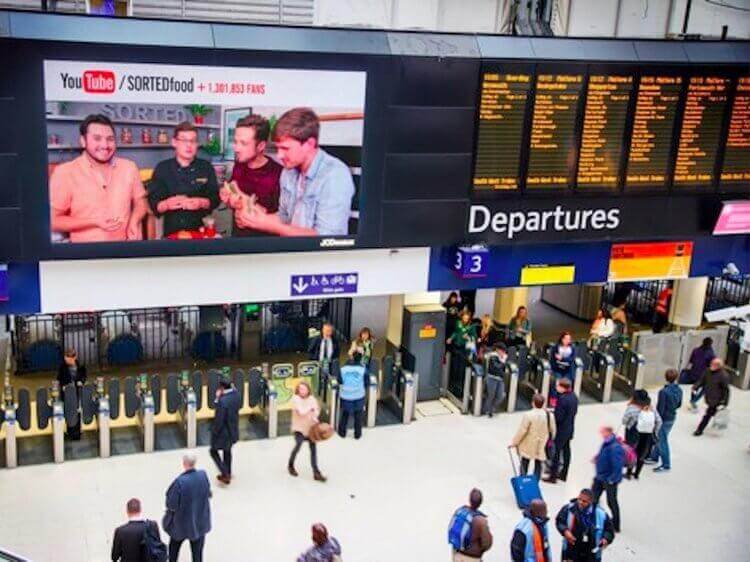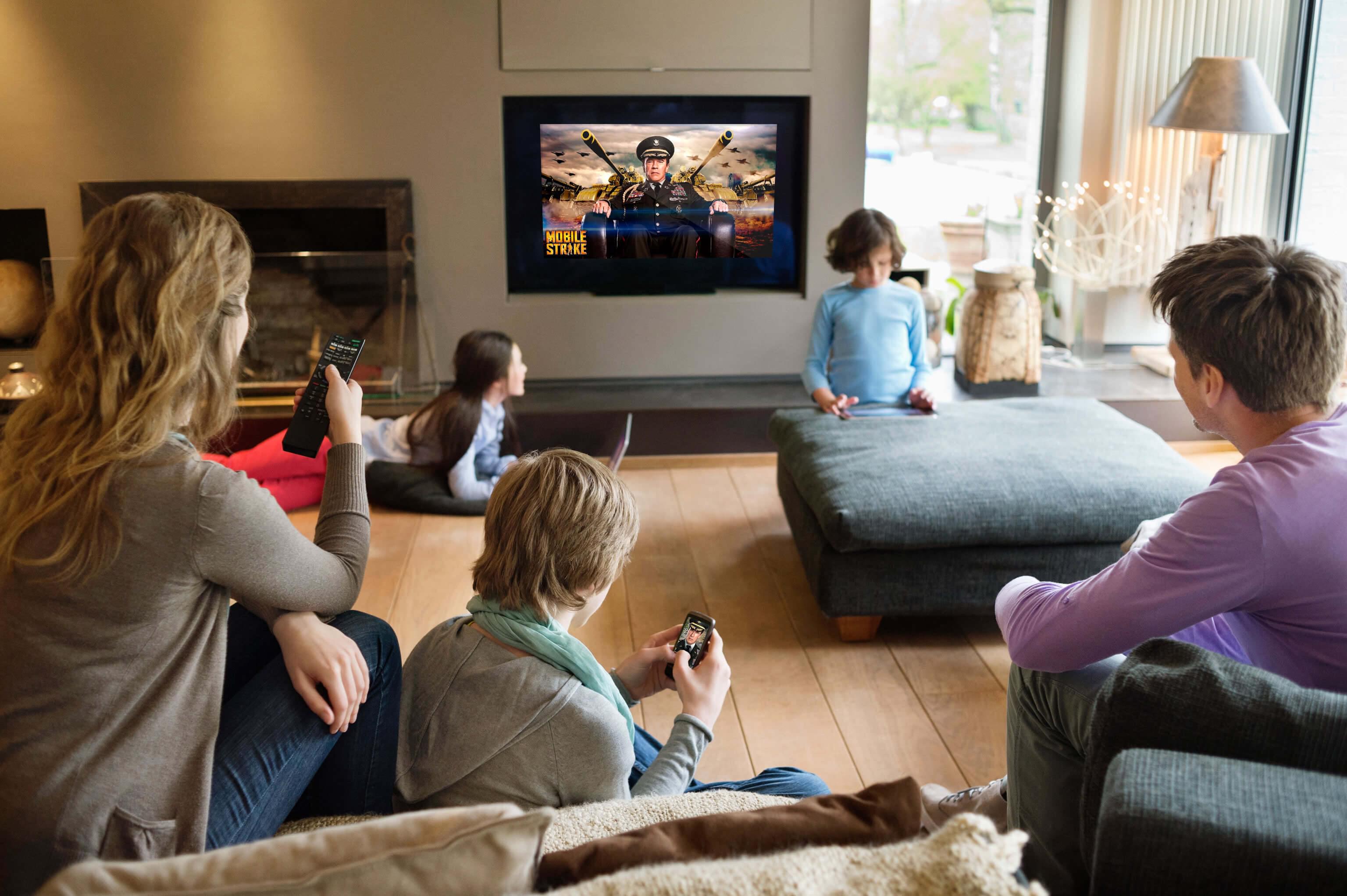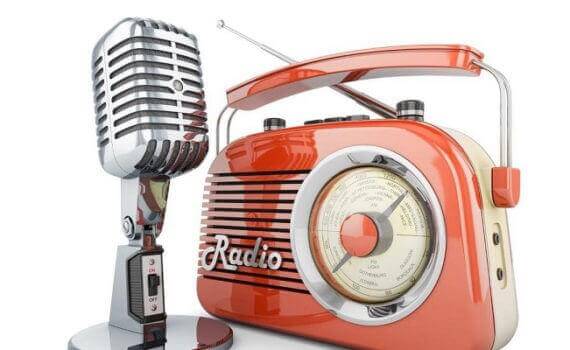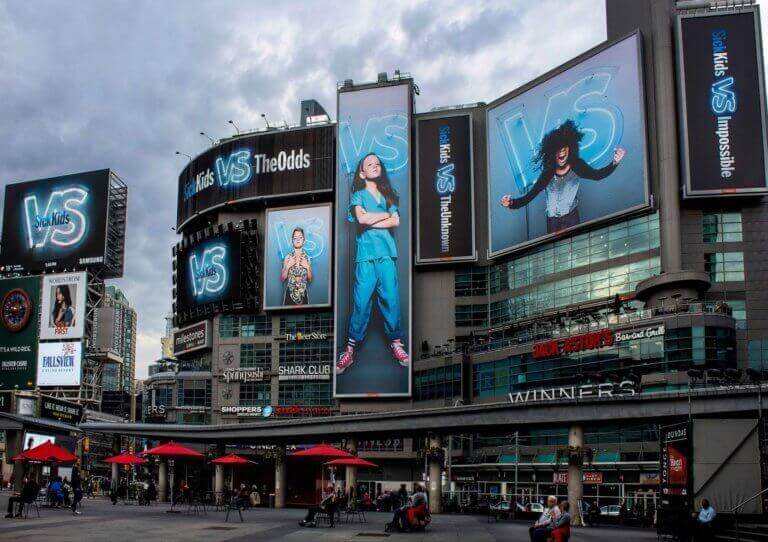
Believe it or not, the next big trend for smart advertisers is actually one that’s been here all along. Outdoor advertising is the future of effective advertising messaging for a number of reasons, whether it be with digital partnerships or mobile billboards. Advertisers among us- pay attention to the strides that outdoor advertising takes in order to deliver the clearest, most impactful results.
There are different advertising options available in the marketing mix. Based on your company’s objectives, budget and target audience, you normally advertise through one or more type of media. Calculating your return on investment in dollars is difficult, but you need to establish measurable goals, such as a percentage increase in order to evaluate success. A channel that calculates and measures these business milestones precisely is outdoor advertising. Smart advertisers will see the benefits in creating influential outdoor campaigns. Easy-to-reach digital channels are still effective, but outdoor advertising has the potential to be the largest impact advertising.
Let’s take a look at how outdoor advertising fares to other advertising channels, as well as see what trends outdoor advertising has in store for 2019.
Current Trends in Outdoor Advertising
Outdoor advertising provides a great deal of advantages for businesses thriving, or trying to, in this current era.
One of the more talked about trends is that digital out-of-home advertising (DOOH) will harvest itself in printed media. This means that multi-channel campaigns can include digital printed borders or graphics to help strengthen their appeal and design. DOOH is consistently paired with print advertising to create a fuller campaign. This outdoor advertising channel continues the conversation for subjects left unsaid on traditional advertising.
There’s not enough of a reach for Gen Z consumers on digital advertising alone. According to a report by AdAge and UNiDAYS released in summer of 2018, Gen Z buyers are more capable of tuning out digital ads and actually prefer physical experiences. Their time online becomes interrupted if a digital ad interferes with their activity. The report found that 56% of Gen Z-ers don’t click on website ads, 64% don’t listen to podcasts, 64% use their phones for browsing only (not shopping), 74% don’t watch streaming videos, and, most importantly, 84% pay attention to outdoor advertising. This report is extremely telling that digital advertising isn’t enough to reach these valuable young adults along their marketing milestones.
Events-based marketing is on the rise. According to a report by BrandMuscle in 2018, 2700 local marketers spoke of how many advertisers are showing up to in-person events in order to spread word of their client’s brands. Impressive results are being drawn from face-to-face interactions in trade shows, conferences, or hosting their own events. In the report, it’s revealed that advertisers hosting their own events was the most effective marketing strategy out of every other channel they participated in (ex. online ads, social media, radio, television).
Mobile billboards and vehicle advertising drives online sales for businesses. Due to retargeting and measurement components of mobile billboards, advertisers are seeing a bright future in putting messages on the backs of trucks in order to target the right heads. Online retailers are putting ads on fleets of taxis in order to deliver their branding messages to outdoor shoppers, and, with more online sales of products, delivery vans distributing those products can have a mobile billboard on their vehicle. This multi-purposeful advertising opportunity is an outdoor sensation.
Out of so many advertising options, outdoor advertising is considered one of the most popular methods to attract a large number of audiences. Outdoor advertising is called a mass-market medium, just like broadcast, radio, TV, and cinema advertising. For this reason, it is better utilized for broad messages, branding, and support campaigns.
OOH Advertising vs Newspaper (Print)
Newspaper and outdoor are two of the oldest forms of advertising with a longstanding history. Despite the decline of the newspaper industry as it fights a rear-guard battle with the internet, it’s influence in advertising hasn’t been reduced. However, it’s target has shifted. There’s not many Gen X, Y, or Z newspaper advertising consumers. Even if popular in the baby boomer category, there’s still a shortage of reach. OOH can resolve some of newspaper advertising’s shortcomings by offering selective targeting. OOH penetrates newspaper zones that are too large for reaching specific neighborhood target areas.
Newspapers have a short shelf life. OOH can extend the life of a newspaper campaign by presenting ad messages in a marketplace 24 hours per day, seven days per week. The possibilities of greater reach, in a specific outdoor environment, are greater than that of someone picking up the newspaper by chance. Readership rates are declining and will likely continue to due to increasing numbers of alternate news sources. OOH’s advertising nature is unavoidable and gives consumers no other reason to turn away.
OOH Advertising vs Television
OOH reinforces television messages when viewers are away from their homes during the course of daily activities. OOH minimizes wasted coverage and improves an advertiser’s campaign by providing the ability to target ad messages geographically. Television is an expensive channel to advertise on. OOH improves the efficiency of a television campaign purchase by driving down CPM costs. OOH reaches light TV viewers who are younger, mobile, and more affluent than heavy TV viewers.
OOH Advertising vs Radio
The combination of radio and OOH reaches a mobile audience, offering a balance of sight and sound. Radio messages are susceptible to channel surfing, however. OOH can maintain the market presence of a brand featured on radio after listeners have switched stations. Radio is considered a frequency medium, and OOH can increase the reach of a radio campaign by providing broad market appeal to radio listeners.
OOH Advertising vs Internet
Internet and OOH advertising reach similar audiences. Both market to a younger, educated, affluent, and mobile audience. OOH extends the reach and frequency of an Internet campaign when users are offline. The brevity of OOH’s copy is ideal for driving traffic to a website. While internet advertising may work in some cases, it’s very easy for online users to scroll past or exit out of banner ads uninteresting to them.
After looking at the current and rising trends of outdoor advertising in 2019, as well as see how it compares to other advertising channels, it’s important for the savviest of advertisers to remember that OOH is an effective channel that reaches the most impressionable of targets.


